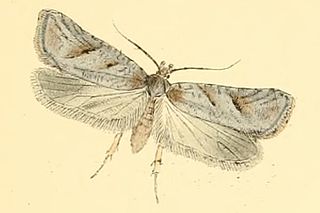| Depressaria | |
|---|---|
 | |
| Purple carrot-seed moth imago (Depressaria depressana) | |
| Scientific classification | |
| Domain: | Eukaryota |
| Kingdom: | Animalia |
| Phylum: | Arthropoda |
| Class: | Insecta |
| Order: | Lepidoptera |
| Family: | Depressariidae |
| Subfamily: | Depressariinae |
| Genus: | Depressaria Haworth, 1811 |
| Type species | |
| "Phalaena heraclei" sensu Haworth, 1811 | |
| Synonyms | |
Depressaria is a genus of moths in the superfamily Gelechioidea. It is the type genus of subfamily Depressariinae, which is often – particularly in older treatments – considered a distinct family Depressariidae or included in the Elachistidae, but actually seems to belong in the Oecophoridae. [1]
Contents
The genus' type species is the parsnip moth. Its scientific name has been much confused for about 200 years. Adrian Hardy Haworth, on establishing the genus Depressaria in his 1811 issues of Lepidoptera Britannica, called the eventual type species Phalaena heraclei, an unjustified emendation of P. (Tortrix) heracliana. In this he followed such entomologists of his time as Anders Jahan Retzius, who in 1783 had believed the parsnip moth to be a species originally described by Carl Linnaeus in 1758. But in fact, this was a misidentification; Linnaeus' moth was actually the one known today as Agonopterix heracliana . John Curtis also popularized another incorrect spelling, D. heracleana, apparently first introduced (as Pyralis heracleana) by Johan Christian Fabricius in his 1775 Systema Entomologiae. [2]








